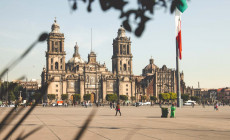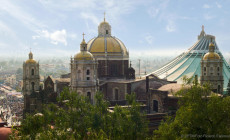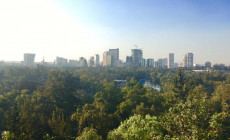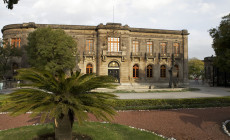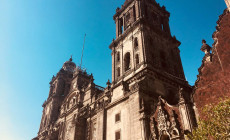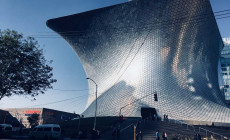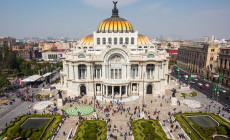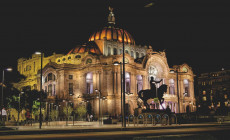-
Latin America
Latin America
- Countries (hidden space)
- Galapagos & Ecuador
- Guatemala
- Mexico
- Panama
- Peru
- Popular Attractions
- Machu Picchu
- Inca Trail
- Easter Island
- Galapagos Islands
- Patagonia
- Rio de Janeiro
- Iguazu Falls
-
Africa
Africa
- Spacer Africa
- South Africa
- Zimbabwe
- Popular Attractions
- Cape Town
- Okavango Delta
- Sossusvlei Dunes
- Victoria Falls
- The Kruger
- The Garden Route
- Masai Mara
-
Asia & Middle East
Asia & Middle East
- Asia
- Borneo (Malaysia)
- Cambodia
- India
- Japan
- Middle East
- Jordan
- Spacer Asia
- Laos
- Sri Lanka
- Uzbekistan
- Vietnam
- Popular Attractions
- Taj Mahal
- Lion Rock (Sigiriya)
- Angkor Wat
- Ha Long Bay
- Kyoto
- Petra
-
Destinations
- Latin America
- Argentina
- Bolivia
- Brazil
- Chile
- Colombia
- Costa Rica
- Galapagos & Ecuador
- Guatemala
- Mexico
- Panama
- Peru
- Asia
- Borneo (Malaysia)
- Cambodia
- India
- Japan
- Laos
- Sri Lanka
- Uzbekistan
- Vietnam
- Middle East
- Jordan
- Southern & East Africa
- Botswana
- Kenya
- Namibia
- South Africa
- Zimbabwe
- Contact Us
-
About
About
Llama Travel provides high quality holidays at the lowest possible prices.
99% recommend us Lower prices - guaranteed Financially protected by ATOL
Mexico City
The capital of Mexico sits atop a plateau in the Valley of Mexico, close to the centre of the country. The valley became the heartland for the Aztec civilisation in the 13th century, and an urban centre was established on an island in Lake Texcoco. This city, known as Tenochtitlán, was a dominant power with significant influence over neighbouring settlements.
When Spanish explorer Hernán Cortés arrived in Tenochtitlán in November 1519 he was initially welcomed, but relations rapidly grew tense. On 30 June 1520 the native Aztec population rose up against the European invasion and drove them out of the city. The following year, Cortés began a three-month-long siege, weakening the city residents and leaving them vulnerable to conquest, which was achieved in August 1521. The Spanish immediately established a European-style settlement, with streets arranged in a grid pattern and Catholic churches replaced indigenous temples.
The city grew and reached the limits of the island on which it was built. Flooding was common during this period as water levels in the lake fluctuated, especially during the rainy summer months. The Aztecs had used dikes for agricultural purposes and for flood prevention, but these were destroyed during the Spanish siege. Lake Texcoco was finally drained in the 17th century and no water remains today.
After the Mexican War of Independence in 1810, Mexico City continued to grow, and President Porfirio Diaz implemented large-scale modernisation from 1876 to 1911. Rapid development led to the Mexican Revolution from 1910 to 1920. For the remainder of the 20th and 21st centuries, the city has continued to grow, with rural residents flowing into the capital to seek employment and financial opportunities.
Mexico City gained a reputation in the 1990s as being highly polluted and is often imagined to be a chaotic metropolis. However, a number of schemes have since been initiated to try to reduce pollution levels, such as efforts to promote more environmentally friendly forms of transportation, and public spaces have been revitalised in recent years. Mexico City is an important financial centre and has a fast-growing economy, producing over 20% of Mexico’s GDP. Citizens from every region have migrated towards the capital, bringing with them a rich heritage of regional cultures, traditions, languages and cuisines. Large numbers of expatriates and immigrants from the US, Canada, South and Central America, Europe and Eastern Asia have also made homes here. Visitors can explore Mexico City safely and there are some very pleasant areas to discover.
There are now 16 official boroughs, and the easiest way to travel between them is on the city’s metro system, currently the largest in Latin America and one of the busiest in the world. Metro fares are very low (around 20p per journey), and the network is easily navigated. Pre-Hispanic remains were unearthed whilst the train line was being built, and several metro stations have these discoveries on display.
One of the most appealing aspects to Mexico City is the approximation of ancient, colonial-era and modern constructions and cultures. Here it is possible to retreat into a traditional cantina to sample authentic tequila from Guadalajara, see ruins dating from before the European arrival in the early 16th century, experience excellent nightlife in the hip Roma district, gaze up at grand Catholic churches, picnic in expansive leafy parks, and try all sorts of foods hailing from every corner of Mexico.
Read our blog about the 9 Classic Things to Do in Mexico City.

